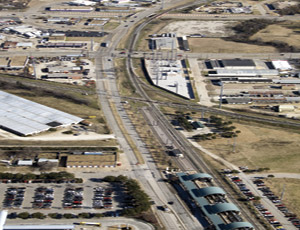Plans for building the $1.8-billion FutureGen clean-coal power plant and underground carbon-storage site near Mattoon, Ill., remain on hold while the U.S. Dept. of Energy and the FutureGen Industrial Alliance review the agreement covering its construction, financing and operation.

The DOE must approve the agreement before the FutureGen Industrial Alliance can build and operate the coal-fired, 275-MW plant, which would capture nearly all the carbon dioxide it creates and then store it permanently more than a mile deep in the earth. The plant received environmental clearances a year ago.
The unique generating facility would also be used for developing and testing other cutting-edge technology that could be used to help coal-fired power plants all around the world operate more effectively.
The FutureGen power plant would be built through a public-private partnership between the DOE and the FutureGen Industrial Alliance, a group of energy-related companies that currently includes members from the U.S., United Kingdom, Australia and China.
In the FutureGen public-private partnership, the DOE is responsible for independent oversight and regulation, while the FutureGen Industrial Alliance is responsible for designing, building and operating the facility. Previously announced financing plans say the federal government will contribute $1 billion toward the project. The rest will come from the alliance and other sources.
In July 2009, DOE officials said they expected to decide by early 2010 whether to let the FutureGen power plant project move forward into the construction and operation phases, or to end it, but as of late May, the review was still under way.
�The DOE has received and granted a request from the FutureGen Industrial Alliance to extend the project�s limited-scope cooperative agreement for an additional 60 days,� says DOE spokesperson Tiffany M. Edwards.
Alliance spokesman Lawrence Pacheco says the DOE has been supportive of the project and that the alliance is optimistic about the discussions.
The FutureGen power plant would be the world�s first commercial-scale, coal-fired power plant to integrate advanced technology for coal gasification, hydrogen production, electricity generation, emission control, CO2 capture and permanent storage. Its electric output would power about 150,000 average homes.
The DOE and FutureGen selected the plant�s proposed location in east-central Illinois from among four sites that international geologic and carbon-sequestration experts recommended after examining 100 criteria.
The site is in Coles County, about 180 mi south of Chicago. It sits over deep formations of porous sandstone that lie 6,800 to 8,000 ft or more below the earth�s surface and are capped by impervious layers of shale. Geologists say that is the ideal kind of rock formation in which to permanently trap CO2.
The FutureGen plant would capture up to 90% of the CO2 generated by its burning of coal, compress the CO2 gas into a liquid and then pipe it down into the porous sandstone, where it would be permanently trapped by the shale above.
The FutureGen Industrial Alliance estimates the sandstone layers in the area have plenty of capacity to store as much CO2 as FutureGen would inject in 25 years.
The FutureGen Alliance estimates that building the plant would support an average of 1,000 construction jobs over the three years it would take to build the plant.
Earlier statements from DOE and FutureGen expected ground to be broken at the end of 2010 and construction of the plant to be completed in 2014. It is not yet known how the longer review time will affect the construction schedule if the DOE decides to let the project move forward.
Once the effectiveness of capturing and storing carbon is proven by projects like FutureGen, building other projects nationwide could give the construction industry a boost.

Post a comment to this article
Report Abusive Comment